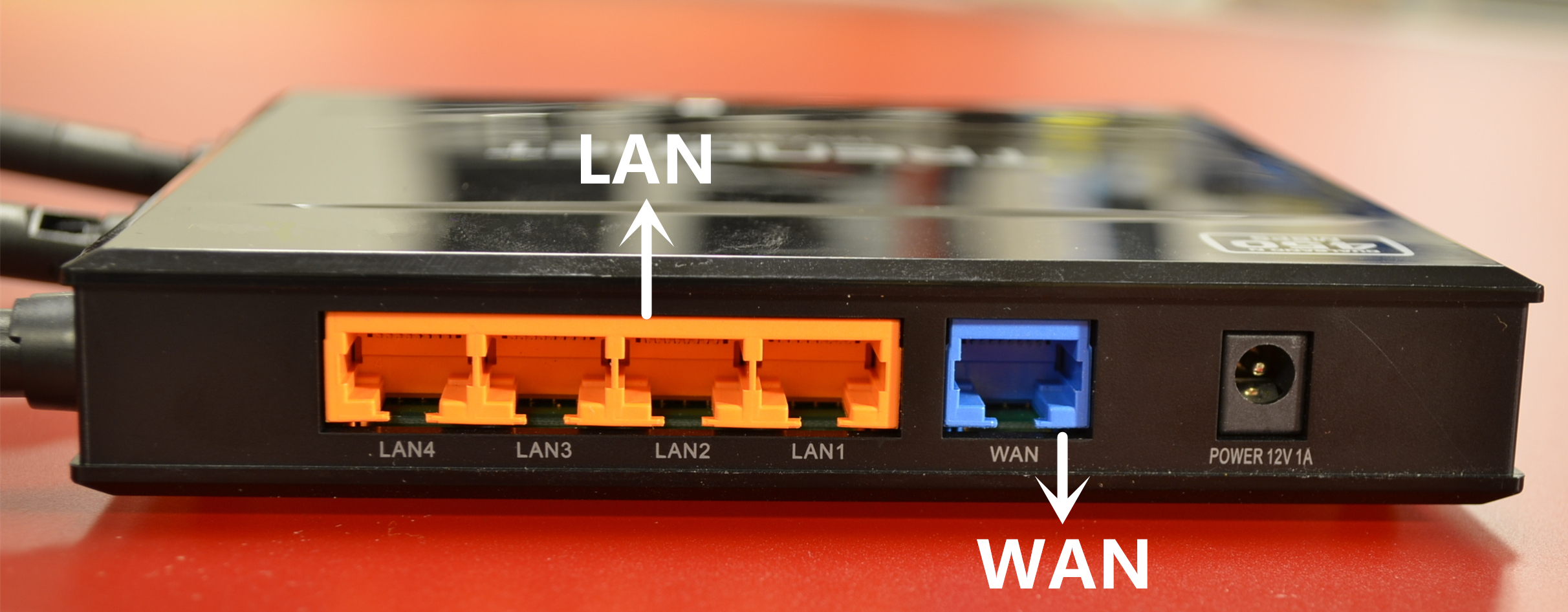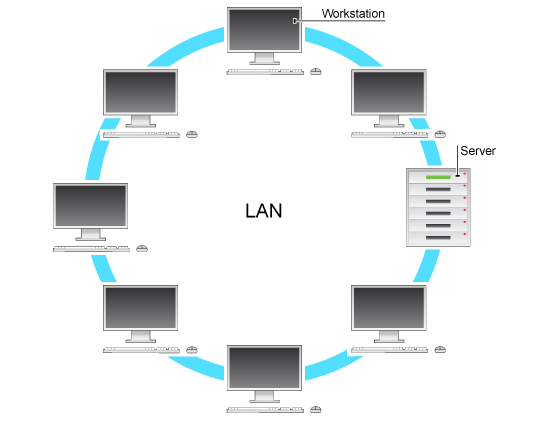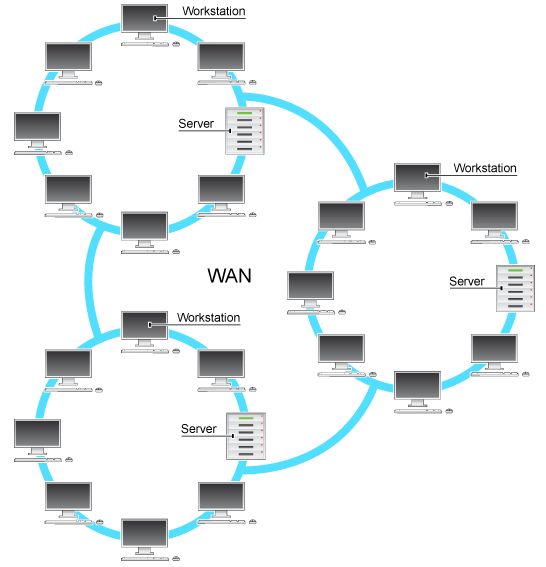When setting up the wireless router at home, you may notice that there are different ports at the back of router noted with LAN or WAN. If you are totally new to this, then understanding the differences between LAN and WAN technologies is fairly important. This article will solve your confusion about these network terms.

LAN is the abbreviation of local area network. As a simple and original network, LAN is widely used in different kinds of places for short range computer connections. It is a computer network built within a restricted area. LAN network has its own network devices and local interconnections. Applications of LAN can always be found in the residence, school, laboratory, university campus or office. All the computers are linked in the same general location. A local area network is considered to be private and maintained by a single group of people.

WAN refers to wide area network. It is a computer network with a large geographical coverage. The essence of WAN is to allow a network to be carried out without the limitation of location. The Internet that we use every day is a good example of WAN network. As its name suggests, WAN is very wide that can across a town, a region, a country or even the whole world. It is often used by business and government agencies to make strong network communication among employees, clients, supplier and buyers from various parts of the world.

Here are some major differences between LAN and WAN computer networks.
- Point 1, cover ranges of LAN and WAN networks are different. LAN connects computers in a small physical area, while WAN connects larger areas situated in different geographical locations.
- Point 2, network speeds of LAN and WAN are varied. WAN is typically slower than LAN due to the distance data must travel. The maximum speed of LAN is 1000 Mbps while WAN can only reach 150 Mbps.
- Point 3, as for the security level, LAN seems to be better than WAN. Because WAN involves more people into the interconnection, there is a greater possibility of network issues.
- Point 4, due to the smaller network coverage, setup and maintenance costs for LAN are usually lower than WAN.
Apart from the common LAN and WAN computer networks, there are also many other types.
WLAN: wireless local area network is a type of LAN that uses wireless technology to connect computers or devices to the router.
MAN: metropolitan area network is larger than LAN and smaller than WAN to connect nodes located in the same metro area.
SAN: storage area network provides access to consolidated, block level data storage. It does not rely on a LAN or WAN.
VPN: virtual private network help users to access a private network remotely through a virtual point-to-point connection.
EPN:enterprise private network is a computer network built by a business to interconnect its various locations to share computer resources.
PAN:personal area network is the smallest and most basic network for data transmission among personal devices.
LAN and WAN are the most widely used computer networks in today’s world. Both of them have their own advantages and disadvantages. When you are confused about which network to set up, network distance is a good aspect to consider. Although LAN has many benefits, you still need to choose WAN when it comes to large areas networking.

 Nowadays, people are widely using media converters for LAN (Local Area Networks) and MAN (Metro Area Network). As for the LAN, media converter plays an important role in combining the fiber optic cabling and active equipment with the current copper structured cabling. And in the case of MAN, media converter is also significant in conversing electrical signals into optical signals which increases the service deployment and decreases the service cost for customers. This post is going to further explain the advantages of using media converters in LAN and MAN respectively.
Nowadays, people are widely using media converters for LAN (Local Area Networks) and MAN (Metro Area Network). As for the LAN, media converter plays an important role in combining the fiber optic cabling and active equipment with the current copper structured cabling. And in the case of MAN, media converter is also significant in conversing electrical signals into optical signals which increases the service deployment and decreases the service cost for customers. This post is going to further explain the advantages of using media converters in LAN and MAN respectively.

